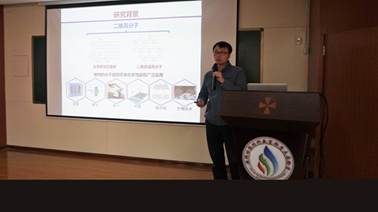Speaker: Yuxi Xu, School of Engineering, West Lake University.
Reporting time: 10:30-11:30, November 20, 2019.
Report location: Conference room on the second floor of the Key Laboratory of Special Functional Materials.
Organizer: Key Laboratory of Special Functional Materials, Welcome!

Graphene is a two-dimensional carbon atom crystal with a thickness of one atom, and it is also a unique natural two-dimensional polymer. Flexible graphene sheets can be assembled into the porous bulk materials through the three-dimensional assembly, so that the advantages of graphene nanosheets can be effectively expanded to the macroscopic material level. Inspired by the structure of graphene, scientists hope to further rationally design and synthesize new two-dimensional polymers from the atomic or molecular level, and obtain new two-dimensional materials with new framework connections and excellent properties. This research field is full of huge challenges. This article will introduce our design and synthesis of a series of new electrochemically active materials and the related three-dimensional graphene composites, as well as the dexterous synthesis of several new framework-connected two-dimensional polymer materials. And we focus on the application of these two complementary directions in electrochemical energy storage and conversion, providing a new breakthrough for solving important problems of electrochemical energy field.
Yuxi Xu, graduated with a bachelor's degree from Wuhan University in 2007, graduated with a Ph.D. from Tsinghua University in 2011, and then engaged in postdoctoral research at the University of California, Los Angeles. He joined the Department of Polymer Science, State Key Laboratory of Molecular Engineering of Fudan University as a doctoral supervisor in July 2015. Recently, he joined the School of Engineering of West Lake University as a researcher/doctoral supervisor at April 2019. He mainly engaged in the chemical preparation, controllable assembly of new polymers, graphene and other low-dimensional functional materials and their applications in energy, environment and catalysis. He has published more than 50 first/corresponding author papers in Nat. Commun., Acc. Chem. Res., JACS, Angew. Chem., Adv. Mater. and other journals, which have been cited more than 10,000 times. He won the First Prize of Natural Science of the Ministry of Education in 2013 and the Second Prize of National Natural Science of 2016 (Second Completion), and was selected as Shanghai Oriental Scholar Distinguished Professor (2015), Chinese Association for Science and Technology Young Talent Project (2017) and Clarivate Analytics Global Highly Cited Scientist (2018, 2019).